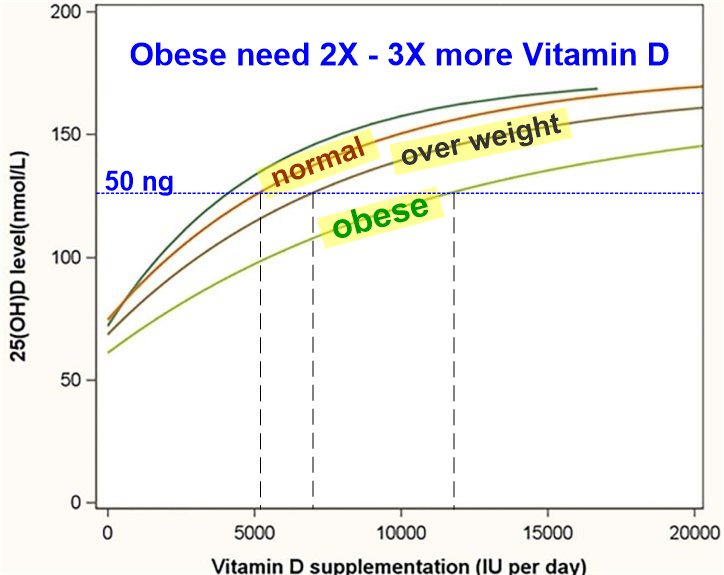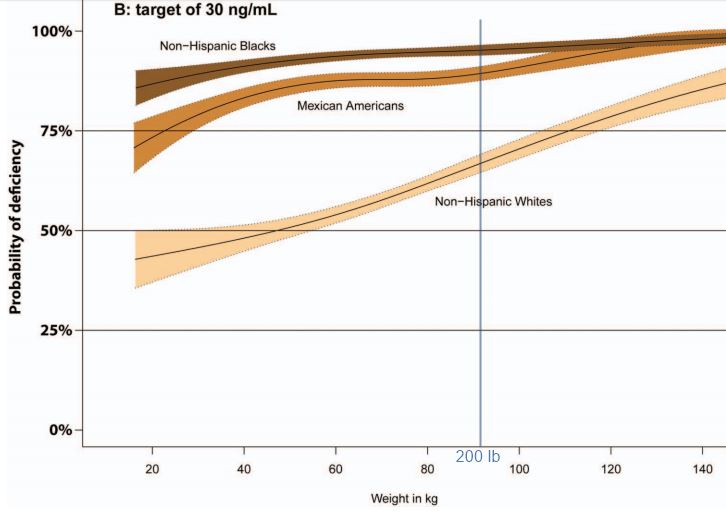Increase in Vitamin D deficiency with weight and skin darkness – chart
Probability of Vitamin D Deficiency by Body Weight and Race/Ethnicity.
J Am Board Fam Med. 2016 Mar-Apr;29(2):226-32. doi: 10.3122/jabfm.2016.02.150251.
Weishaar T1, Rajan S2, Keller B2.
1From the Department of Health and Behavior Studies (TW, SR) and the Department of Human Development (BK), Teachers College, Columbia University, New York, NY. [email protected].
2From the Department of Health and Behavior Studies (TW, SR) and the Department of Human Development (BK), Teachers College, Columbia University, New York, NY.
 Overview Dark Skin and Vitamin DHalf of the US will be people of color – wonder how many will be vitamin D deficientSkin - Dark category listing has items along with related searchesNote: Skin-Dark was the 2nd of 150+ categories in Vitamin D Life
Overview Dark Skin and Vitamin DHalf of the US will be people of color – wonder how many will be vitamin D deficientSkin - Dark category listing has items along with related searchesNote: Skin-Dark was the 2nd of 150+ categories in Vitamin D Life 📄 Download the PDF from Vitamin D Life

INTRODUCTION:
While most physicians recognize that vitamin D status varies by skin color because darker skin requires more light to synthesize vitamin D than lighter skin, the importance of body weight to vitamin D status is a newer, less recognized, finding. The purpose of this study was to use nationally representative US data to determine the probability of vitamin D deficiency by body weight and skin color.
METHODS:
Using data for individuals age ≥6 years from the 2001 to 2010 cycles of the US National Health and Nutrition Examination Survey, we calculated the effect of skin color, body weight, and age on vitamin D status. We determined the probability of deficiency within the normal range of body weight for 3 race/ethnicity groups at 3 target levels of 25-hydroxyvitamin D.
RESULTS:
Darker skin colors and heavier body weights are independently and significantly associated with poorer vitamin D status. We report graphically the probability of vitamin D deficiency by body weight and skin color at vitamin D targets of 20 and 30 ng/mL.
CONCLUSION:
The effects of skin color and body weight on vitamin D status are large both statistically and clinically. Knowledge of these effects may facilitate diagnosis of vitamin D deficiency.
© Copyright 2016 by the American Board of Family Medicine.
PMID: 26957379
